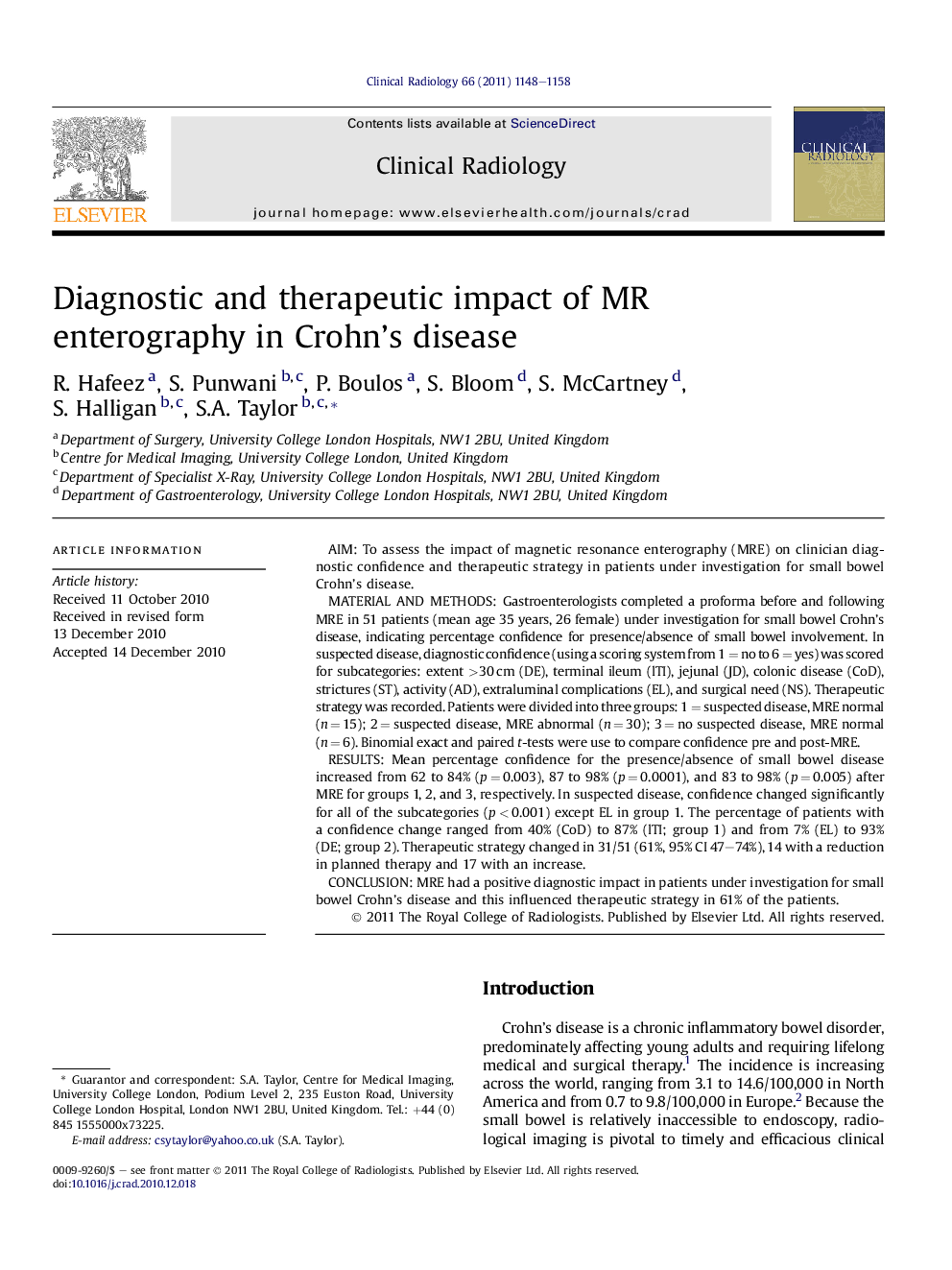| Article ID | Journal | Published Year | Pages | File Type |
|---|---|---|---|---|
| 3982408 | Clinical Radiology | 2011 | 11 Pages |
AimTo assess the impact of magnetic resonance enterography (MRE) on clinician diagnostic confidence and therapeutic strategy in patients under investigation for small bowel Crohn’s disease.Material and methodsGastroenterologists completed a proforma before and following MRE in 51 patients (mean age 35 years, 26 female) under investigation for small bowel Crohn’s disease, indicating percentage confidence for presence/absence of small bowel involvement. In suspected disease, diagnostic confidence (using a scoring system from 1 = no to 6 = yes) was scored for subcategories: extent >30 cm (DE), terminal ileum (lTI), jejunal (JD), colonic disease (CoD), strictures (ST), activity (AD), extraluminal complications (EL), and surgical need (NS). Therapeutic strategy was recorded. Patients were divided into three groups: 1 = suspected disease, MRE normal (n = 15); 2 = suspected disease, MRE abnormal (n = 30); 3 = no suspected disease, MRE normal (n = 6). Binomial exact and paired t-tests were use to compare confidence pre and post-MRE.ResultsMean percentage confidence for the presence/absence of small bowel disease increased from 62 to 84% (p = 0.003), 87 to 98% (p = 0.0001), and 83 to 98% (p = 0.005) after MRE for groups 1, 2, and 3, respectively. In suspected disease, confidence changed significantly for all of the subcategories (p < 0.001) except EL in group 1. The percentage of patients with a confidence change ranged from 40% (CoD) to 87% (lTI; group 1) and from 7% (EL) to 93% (DE; group 2). Therapeutic strategy changed in 31/51 (61%, 95% CI 47–74%), 14 with a reduction in planned therapy and 17 with an increase.ConclusionMRE had a positive diagnostic impact in patients under investigation for small bowel Crohn’s disease and this influenced therapeutic strategy in 61% of the patients.
